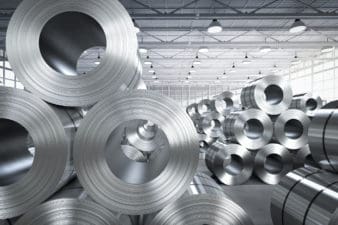It’s been a rough week for Kinross Gold Corp. (TSX:K)(NYSE:KGC). On Tuesday, the Canadian gold miner reported a quarterly net loss of nearly US$1.5 billion due to US$932 million of impairment charges and an inventory writedown of US$168 million.
Adjusted loss to shareholders was $6 million, or $0.01 per share, for the company’s fourth quarter. On average, analysts polled by Thomson Reuters expected the company to report profit per share of $0.01.
Revenue decreased to $791.3 million from $877.1 million in the year-ago period, falling short of analyst estimates of $776.79 million.
On top of the weaker earnings report, the miner confirmed that it is putting its huge Tasiast expansion project in Mauritania on hold.
The gold price outlook and the impact on cash flow generation over the 35-month construction period for Tasiast were important factors in the decision, Kinross noted in an investor presentation.
“We continue to believe a mill expansion has the potential to offer a rare combination of large, low cost production; however preserving balance sheet strength remains our priority, particularly given the current gold price environment,” said company CEO Paul Rollinson in a statement .
“This decision preserves our cash position — which was approximately $1 billion at year-end — and our liquidity, while giving us the financial flexibility to capitalize on a possible future Tasiast expansion, or other opportunities, should they arise,” he added, suggesting the expansion project could be revived in the future, depending on market conditions.
But Kinross can still get its mojo back: the miner is known for getting value from its projects, even when gold prices are depressed. And at least one analyst expects prices to recover by the end of the year.
Julian Jessop, head of commodities research at Capital Economics, noted the precious metal has gained about 5% year-to-date and he expects prices to be boosted further by uncertainty in Europe, Kitco reported.
“Whether or not Greece ultimately exits the euro, we expect the price of gold to be boosted further this year by the return of safe-haven demand as the country’s financial problems drag on,” Jessop said. “Overall, we continue to expect the gold price to recover further, to $1,400 per ounce, by end-2015,” he added.
Despite the current environment, Rollinson predicts that 2015 will be a “solid” year for Kinross, as the company balances cost containment with disciplined capital investment. “We have also taken a prudent approach to our cost assumptions, particularly in relation to currency exchange rates and the price of oil.”
For investors, it may not be the right time to increase your holdings of Kinross. Although the stock has increased in 2015, it’s down 35% over the past year. At the same time, selling Kinross shares now may be a rash move. I suggest a holding position, keeping a close eye on gold prices and the earnings reports of other Canadian gold companies.





